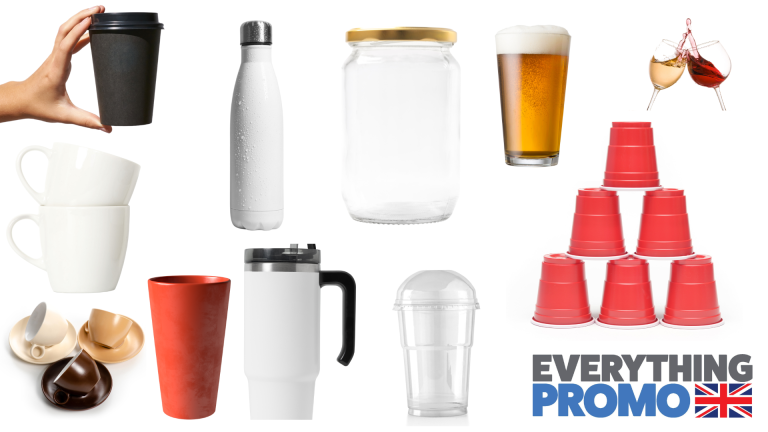The History and Growth Of Promotional Drinkware Items

The History and Growth of Promotional Drinkware Items
Looking back at the history of promotional products, we see they have been present in our lives for hundreds of years. The first personalised product was said to be a commemorative button for George Washington’s inauguration in 1789. During the 1880s, breweries expanded and pasteurisation sent their products to longer distances. Breweries, quick to recognise the potential of branded glasses and ceramic mugs, began using them not just to serve their products but also to promote their brand identity. This marked the beginning of a new era, where businesses started to harness the power of everyday items for advertising.
As we moved into the 20th century, there was a notable increase in plastic manufacturing, which made branded plastic products easily accessible. Today, we benefit from modern advancements in materials and manufacturing techniques, resulting in a wide variety of printed products that cater to every lifestyle. Options range from eco-friendly water bottles to stylish metal travel mugs and shot glasses, reflecting current preferences and trends.
Why Drinkware Works for Promotions
Functionality: Drinkware items, such as bottles and mugs, are used daily by many people. This makes them not only practical gifts but also useful tools for keeping your brand top of mind. For instance, a coffee shop can offer branded mugs for in-store use, a gym can provide branded water bottles for its members, and a tech company can distribute branded travel mugs at trade shows.
Visibility: When printed with a logo or brand message, they’ll act as a mobile advertisement. Whether at work, at home or on the go, these items promote brand awareness to both the user and those around them.
Longevity: Compared to other promotional items, they have a longer lifespan, ensuring your branding remains visible for years. Every time customers reach for their favourite mug or bottle, they’ll be reminded of your brand.
Adaptability: Drinkware can be customised in various ways to suit different audiences. From eco-friendly options to stylish designs, there’s something for everyone.
What’s next for promotional drinkware?
Sustainability: Now we’re all starting to make more eco-friendly choices, products made from recycled and plant-based materials such as stainless steel and bamboo are becoming widely popular. This trend towards sustainability aligns with consumer values and opens up new opportunities for creative and innovative designs in the promotional industry.
Tech Integration: Useful features like hydration reminders, built-in LED lights, and app integrations have made drinkware not just functional but interactive as well. In the future, we can expect even more advanced tech features to be integrated into promotional drinkware, enhancing their functionality and appeal to tech-savvy consumers.
Personalisation: More unique customisation options, such as adding individual names through laser engraving or full-colour printing. This personal touch adds a layer of connections between the brand and the client.
Why It Matters
Promotional drinkware is not just a marketing tool but a way for brands and their customers to connect more and go beyond advertising; these items are just part of their daily lives. As the industry continues to evolve, one thing is sure: drinkware will remain a cornerstone of promotional products, creativity, and innovation to help brands stand out.
The Future of Promotional Drinkware
The future of drinkware products is promising, with sustainability set to be a major focus. Brands will continue to explore new materials that are recyclable and biodegradable. Technology will play a significant role in developing innovative features and modern designs. As consumers increasingly seek drinkware products that are aesthetically pleasing, comfortable to use, and unique, businesses that invest in quality, creativity, and design will reap the best results.
Final Thoughts
In conclusion, the growth of promotional drinkware reflects trends in marketing and consumer engagement. It shows how a simple item can create lasting impressions and foster brand loyalty between brands and consumers. As businesses worldwide continue.